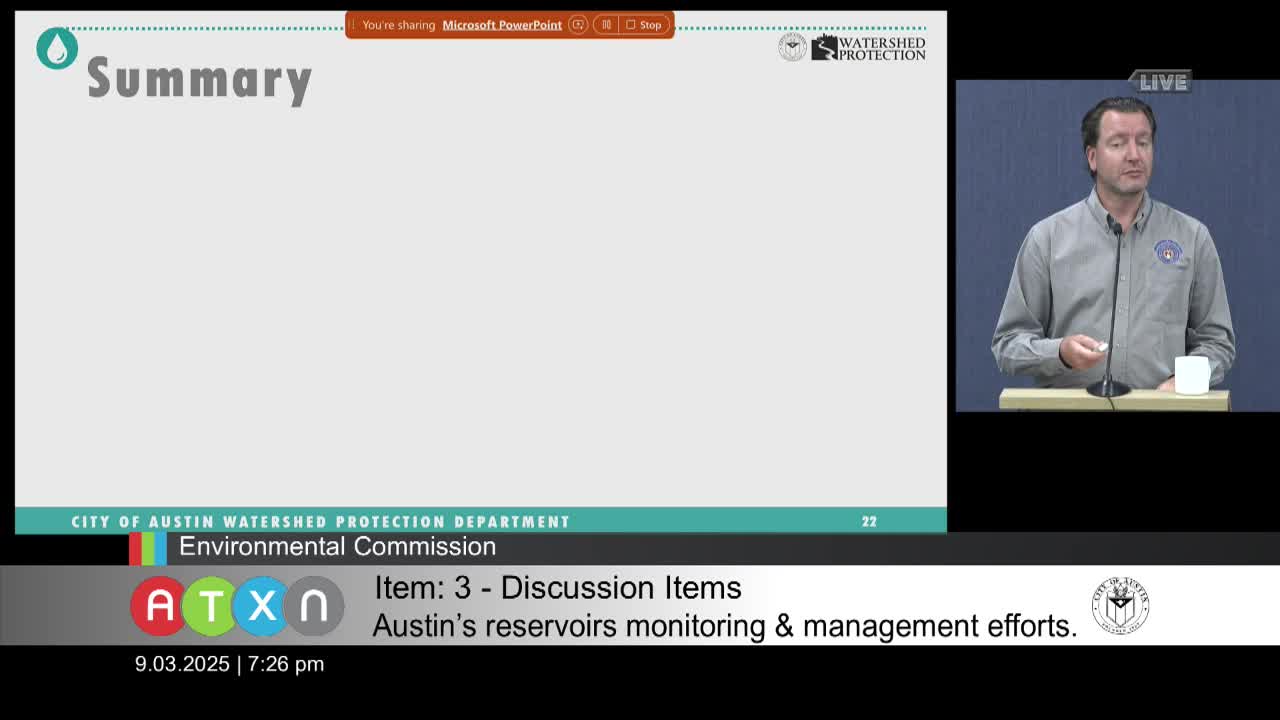Austin developers discuss water quality management and invasive species challenges
September 03, 2025 | Austin, Travis County, Texas
Thanks to Scribe from Workplace AI , all articles about Texas are free for you to enjoy throughout 2025!

This article was created by AI using a video recording of the meeting. It summarizes the key points discussed, but for full details and context, please refer to the video of the full meeting. Link to Full Meeting
The discussion began with an overview of the Austin Lakes index, a tool used to assess the health of local reservoirs. Experts highlighted the importance of native aquatic vegetation, noting that while some plant life is beneficial, the presence of non-native species can detract from overall water quality scores. This nuanced understanding of aquatic ecosystems underscores the delicate balance between preserving natural habitats and managing invasive species.
One significant point raised was the critical role of the riparian area, often referred to as the "critical water quality zone." This zone serves as a vital buffer against pollutants entering the water from surrounding land. The city has developed robust guidelines to protect these areas, a move that sets Austin apart from many other regions. However, the conversation quickly shifted to the need for further enhancements in management practices to safeguard these essential ecosystems.
Microplastics emerged as a key concern during the meeting. Participants pondered the potential for modifying stormwater control measures to capture these contaminants before they enter the lakes. The discussion revealed a gap in current research, particularly regarding the impact of microplastics on water quality and aquatic life. Questions lingered about how these pollutants might be integrated into future assessments of the Austin Lakes index.
Invasive species, particularly hydrilla, were also a focal point of the meeting. The commission explored past efforts to control hydrilla populations, including the introduction of specific flies and fungi aimed at targeting the invasive plant without harming native species. Unfortunately, these attempts have yielded limited success, prompting calls for innovative biological control methods that could more effectively manage these threats.
As the meeting concluded, the atmosphere remained one of inquiry and determination. While many questions were raised, the discussions highlighted a collective commitment to finding solutions for Austin's environmental challenges. The commission's ongoing efforts to monitor and protect local water bodies reflect a broader recognition of the intricate relationships within ecosystems and the importance of proactive management in preserving Austin's natural resources for future generations.
Converted from Austin - Environmental Commission meeting on September 03, 2025
Link to Full Meeting
Comments
View full meeting
This article is based on a recent meeting—watch the full video and explore the complete transcript for deeper insights into the discussion.
View full meeting
